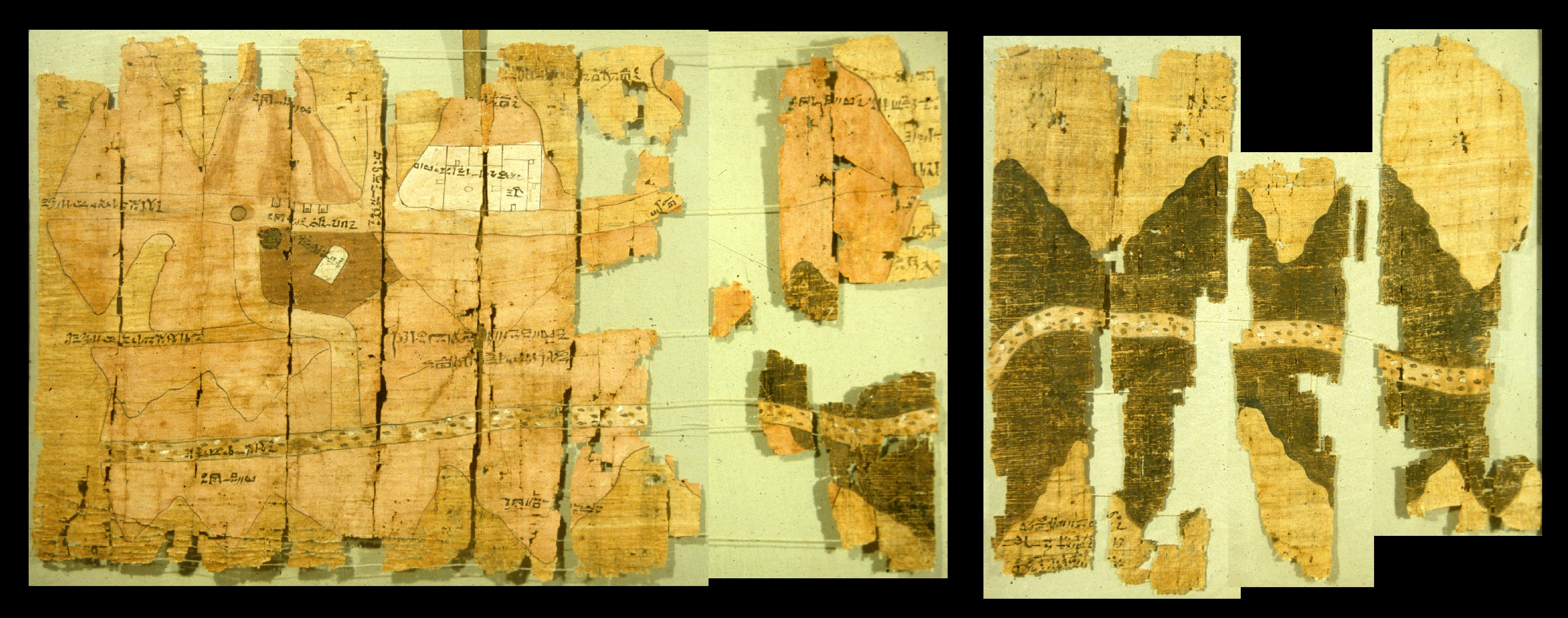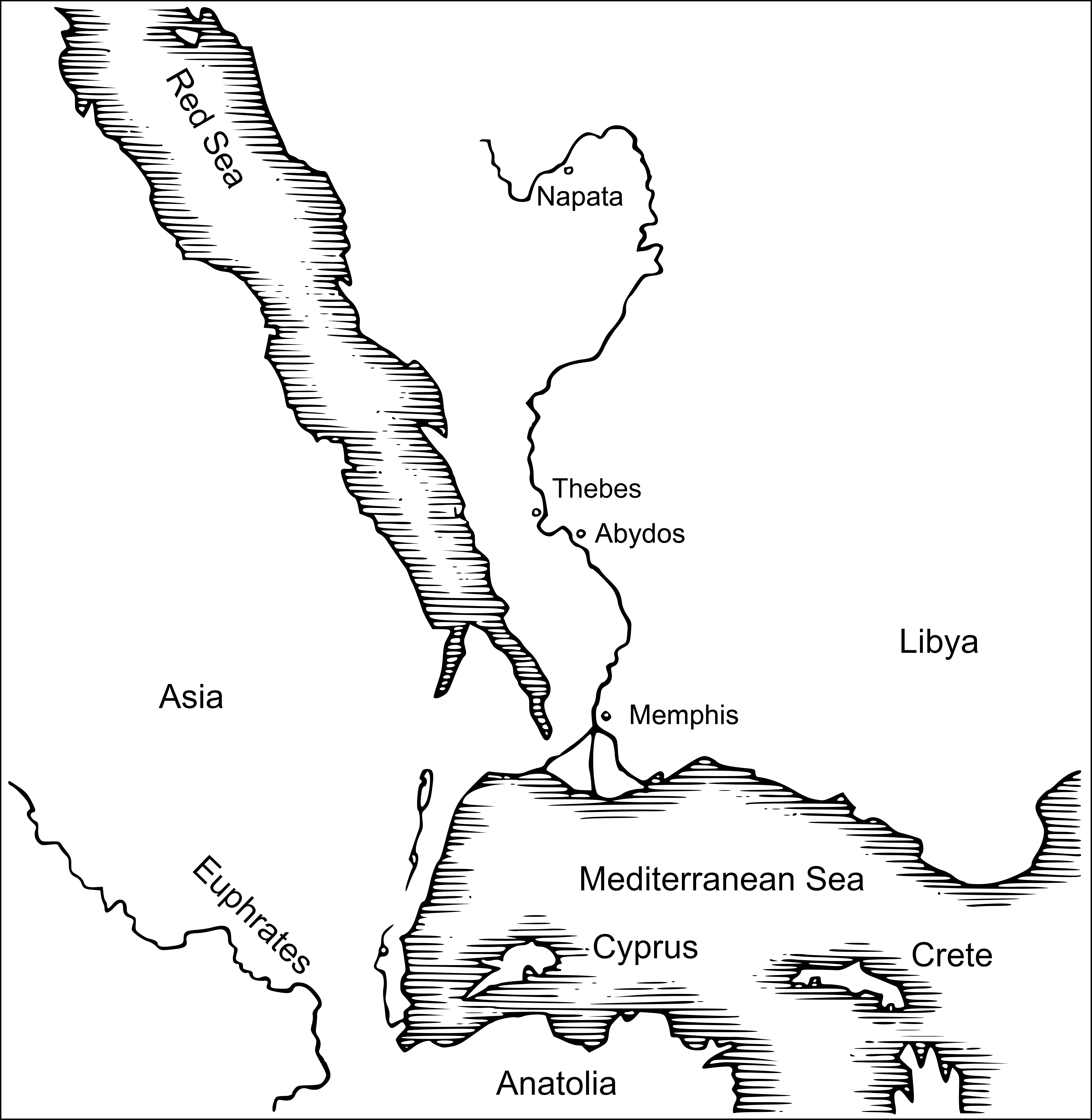Geography and Topography
Geographical knowledge was taught in ancient Egyptian schools from the late Middle Kingdom (c. 18th century BC) at the latest, as can be demonstrated by word lists (“Onomastica”), in which Egyptian cities and non-Egyptian regions are listed along with other entities. The main purpose of these Onomastica was to teach future functionaries the spelling of place names, but it can be assumed that additional information was also conveyed in this context: The official Hori, for example, mocks his correspondent Amenemope in the famous papyrus Anastasi I from the Ramesside Period, with the statement that he was not familiar with the Egyptian-controlled areas of the Near East.
The “Book of the Fayum” from the Graeco-Roman Period mentions the knowledge “of heaven, earth, the underworld, the Upper Egyptian and Lower Egyptian row of chapels, the winds, the State of the water, the hill(s) (?)” amongst the knowledge that was taught at temple schools, and the Greek scholar Clemens of Alexandria listed geography under the canon of Egyptian priestly knowledge even in Late Antiquity. Physical proof of this canonization might be found in votive cubit rods, which are imitations of actual cubit rods with a measuring scale, but with additional information on the dimensions of Egypt, a list of Egyptian provinces and various brief religious texts.

Fig. 1: Turin Papyrus Map (Pap. Turin Cat. 1869+1879+1899 = Pap. Turin CG 17468), Ausschnitt
Apart from these contexts, textual proof of geographical knowledge is sparse. There exists only one map with a section of Wadi Hammamat, which, nevertheless, attests to the existence of this “text” genre. So-called Geographical Processions, a kind of temple inscription, represent the Egyptian provinces as personifications, and their accompanying texts mention their holy places, trees, canals, swamps, etc. In addition to these lists, priests from Graeco-Roman Egypt also composed more detailed monographs and handbooks about some Egyptian provinces. The primary function of these texts, however, was a characterization of Egypt as a possession of the respective temples (Geographical Processions) or a cult-topographical description of a specific region (monographs and handbooks), rather than a purely topographical survey of the country. Similarly, lists of foreign people on temple walls and statue pedestals served primarily as propaganda and depicted the king as ruler of the world, but by doing so, they do shed some light on the geographical horizon of the Egyptians at the time of their composition.
The descriptive vocabulary of Egyptian geographical knowledge on the other hand is barely known. In contrast to the modern Western world view, the ancient Egyptians were ‘oriented’ towards the south and not towards the north. This is already evident in their language, where the word for “West” is derived from the root “right”, and when they sailed southwards, they literally moved “forward”. Geographical Processions, Onomastica and other lists of topographical entities proceed from south to north. Considering the aforementioned orientation, this sequence might attest to the “scientific” background of such lists: They were not written from the practical perspective of a traveler who moves from north to south, but from a scholar’s perspective, for someone who has a virtual map with south on top in mind and “reads” the place names in a natural manner from top down, i.e. from south to north.
For a long time, the world known to the Egyptians mainly included the Levant and parts of Africa, such as the area on this map:

- Crete, the Greek islands and the Peloponnese in the north were among the most remote regions; and in the early times, they even had a semi-mythical character, perhaps comparable to the Terra Australis Incognita of early modern world maps.
- How far geographical knowledge extended into inner Africa, depends on the still discussed location of Punt in the southeast and the destination of the Abu Ballas Trail used in the Old Kingdom in the southwest.
- In the Middle East, the Egyptians certainly knew Syria and Palestine as early as the Old and Middle Kingdom. In the New Kingdom they also became familiar with parts of Anatolia, the Euphrates and some regions of Mesopotamia. An inscription from Taima on the Arabian Peninsula (see BIFAO 111, 2011 and ZOrA 6, 2013) shows an interest in this region, without it being clear what geographical or other knowledge the Egyptians had of it. In the 1st millennium BC, at the latest with the Persian occupation, the geographical horizon extended as far as India.The western Mediterranean seems to have been a blank spot on the Egyptian mental map for a long time. A few Egyptian objects were found in Spain and Italy, but they have presumably reached their place of deposition by means of Phoenician-Punic travelers and merchants.
Expeditions without an economic background, and purely out of geographical interest, were unknown from ancient Egypt. The credibility of the alleged circumnavigation of Africa in the 7th century BC on Egyptian orders, reported by the Greek historian Herodotus, is controversial. The exploration of foreign lands was always a by-product of trade or of military campaigns. Accordingly, the genre of travel literature did not exist; approaches to such a text genre can only be found in autobiographies and narratives at best.
Whether the Egyptians knew that the earth is a globe, is equally controversial. The respective discussion rests on the distances of the underworld, i.e. the travel distance of the sun god at night that is given in New Kingdom underworld books; yet theoretical treatises on this question, if they ever existed, have not survived. Given the limits of the world as known to the Egyptians, the Earth’s curvature alone, even if it had been actively observed, is not proof enough that the Earth is a sphere – theoretically, other convex forms could also have been possible. In fact, the Earth’s curvature is not even accepted as proof by some people today despite our having a much better knowledge of the world, as recent discussion shows.
